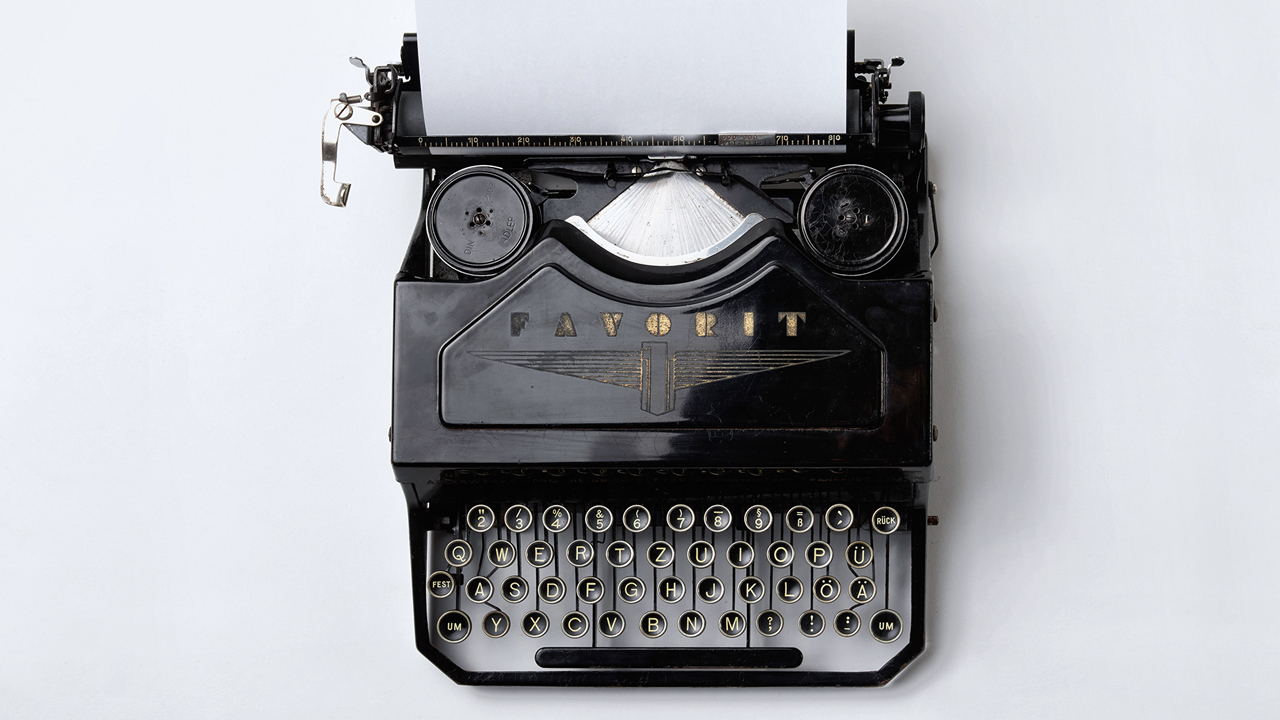How Freewriting Can Help You Get Over Writer’s Block
 by Stacey Bowditch
by Stacey Bowditch
Ask any writer if they’ve ever suffered from writer’s block and you can almost guarantee that all of them will say yes. It doesn’t matter if you’re a professional writer, a hobbyist, or somewhere in between. It doesn’t matter if you’re a copywriter, content writer, ghostwriter or fiction author. A block of creativity can hit any of us at any point in our writing lives.
So what do you do about it?
There are a lot of different opinions out there. Some range from just persevering, others say take a break for a few days, and others suggest going for a walk.
But has anyone ever suggested to you the process of freewriting?
Okay, so what is this freewriting you speak of?
Freewriting is a process designed to just get you writing. To break through the inner critic, the perfectionist, the editor. It’s a process designed to help you develop an idea without overthinking it.
Spelling, grammar, punctuation, sentence structure, flow. None of it matters. It doesn’t even matter if what you write makes sense; you just have to write continuously for the allotted time and silence those voices of self-doubt: the inner critic and inner editor. That really isn’t what this exercise is about. It will feel weird—maybe even wrong—at first. But if you can get past that feeling, you’ll tap into something wonderful. Magical.
Freewriting is a process designed to give you freedom of writing.
It isn’t uncommon for writers to feel like what they write has to be perfect on the first attempt. In fact, it’s something which cripples a huge amount of writers and as a result, they never begin writing at all. This can be soul destroying to storytellers who are bursting to write but feel like they can’t even start.
The process of freewriting is designed to break through this state of paralysis. The idea is that you don’t give a second thought to what you’ve just written, that you just keep going… and going and going until the time is up.
So how you actually “do” freewriting?
How to freewrite
So now you’ve got what the gist of what freewriting is, let’s go through how to do it. You’re going to need around half an hour to do the exercise, or you can just take parts of it and see what works for you.
When I first tried freewriting, I found the first two stages were all I needed for where I was at the time. However, I’ve done much more since and have absolutely fallen in love with it. I honestly cannot recommend it to anyone enough—whether it’s for business blogging or writing fiction. It really is that versatile!
Step One
If you’re anything like me and thousands of other writers out there, you’ll find imagery a huge source of inspiration. So the first part of the process is to find an image that triggers something in you.
It could be a portrait, a landscape picture, an abstract painting. Anything that ignites some kind of spark, or speaks to you in some way.
I love all things fantasy and historical. So when I first attempted freewriting, I went to the big G (Google) and looked for fantasy and historical landscapes. This was the image I chose.
When it comes to finding an image, don’t overthink it. It just has to be something that you find appealing. Something that arouses some kind of curiosity. Something that makes your eyes light up just that little bit.
Got one? Good. Now the fun really begins…
Step Two
Set aside 10 minutes. Now in those 10 minutes, write. You put pen to paper and write whatever comes into your head for 10 minutes straight. Without pause, without break, without thought.
You’re not looking to create a masterpiece. You’re not looking to make a coherent paragraph. You’re not looking to make poetically crafted sentences. You just need to write non-stop for 10 continuous minutes.
Push past the voices telling you that you can’t do it. Push past the critics saying that what you’re writing doesn’t make sense. Push past the self-sabotage that’s laughing at your inability to spell. Ignore every single thought except what that image is creating and get those thoughts on paper.
Think of it like brainstorming. But instead of a big bubble in the middle of the page with random words shooting from it, you’re writing your ideas in one continuous block of text.
The trick is to not give up and to just keep going. Don’t think about what you’ve written or where you’re going or what point you’re trying to make. None of that matters.
Here’s what I wrote in those first 10 minutes after looking at the image above:
Flames of yellow broke through the cracks in the thick clouds that were acting as an almost fog-like entity, preventing curious eyes laying sight on what truly laid beyond.
Jagged pinnacles pierced through the cloud, reaching up and tall into the mystery a long way beyond what any mere mortal could see. Even a dragon flying that high with its wings spread would look nothing more than a speck on the horizon.
But still, he couldn’t stop himself from searching the skyline for a clue of what lived in the fortress so vast and immense he guessed it’d take the best part of the day to walk its circumference. Whatever laid claim to such immensity certainly didn’t want to be seen, though.
The thick cloud wasn’t the only thing stopping him from searching the fortress. A lake sat between him and the elaborate stonework, teasing him with every ripple that shook its surface, goading him in the most placid way he’d ever seen.
Fighting with something he couldn’t even see, it took all his strength to control the movements of his own feet. It took more self-control than he realised he possessed to resist the urge to disrupt the glistening call of the water, trying to entice him to envelope his soul in its cool embrace.
It’s not awful. But it’s also not brilliant. That’s okay, because it isn’t meant to be. I struggle with ideas. BIG time. Give me a vague plotline and I’ll write you a short story in mere minutes. But when I have to come up with something myself…? Eek. I can honestly sit there staring at a blank screen for weeks, months even.
So the fact that this image had allowed me to actually create something, had allowed ideas and imagery to flourish and develop in my own head, was pure magic. It doesn’t matter if it’s poorly written—that can be refined, scrapped. Whatever. The point is I could have spent yet another day staring at a blank page but instead, I came away for the first time in my life bursting with ideas.
So, what happens next? First get yourself a well deserved brew, then come back and move on to step three.
Step Three
You’ve completed the 10 minute exercise and you may be cringing at what’s written down. Great. You’re not going to use the vast majority of it anyway.
Wait, what?!
Yup, you heard. The vast majority of it is going to get scrapped. You can exhale that sigh of relief now.
What you’re going to do is read back through what you’ve written. And you remember how the image made you feel when searching for one? How it appealed to you in some way? How it sparked something? How it piqued even just a little curiosity? Good. That is the feeling you’re looking for when reading back through what you’ve just written.
When you come across something that evokes that same emotion, underline it. It may be a phrase, a sentence, or even just one word. But every time you feel it, underline whatever it was that made you feel. Simple, right?
Step Four
Now you’re going to repeat step two, but using everything you underlined from step three in place of the image. So set aside another 10 minutes and write down everything that comes to mind from what you have underlined. Again, it doesn’t have to make sense, it doesn’t have to be pretty, you just have to write.
Think of it like dancing as if nobody’s watching. Or singing like nobody’s listening. Imagine that freedom you feel and apply it to your writing. Write like your life depends on it and that nobody at all is ever going to even know the contents of what you’ve written, let alone actually read it themselves.
This isn’t writing for reading. It’s writing for idea generation, expansion, freedom. Think of it like scribbling on a piece of paper to see what colour a pen actually is. You are not writing now for a finished product.
But you still have to write. For 10 minutes, solid. No cheating—no breaks, no rereading what you’ve written, no editing as you go, no self doubt. Just writing.
Step Five
Okay! Now we’re getting somewhere. After another well deserved brew and break, come back to what you’ve just written.
You’re going to underline anything that stands out again, just like you did in step three. And once you’ve done that, get a fresh bit of paper and aim to develop the idea even further. Instead of setting a timer this time, set a word count of 500 words.
This is still a development stage so don’t allow yourself to get too caught up on the quality of the writing yet. But at the same time, don’t fall into the trap of writing one word sentences. This isn’t meant to be a 500 word bullet list.
You may find that what you’ve done doesn’t lead to anywhere. But don’t let that discourage you. Try again. Find another image.
You’re not going to find a gem in every attempt but the idea of freewriting is that it lets you get out of your own way. It can help you go back to another project and see things in a different light. It can help you generate and develop ideas when you think your creative well has run dry. It can help you break through a creative block when you’ve been staring at a blank page for far too long.
Try it daily for a fortnight. I dare you. I dare you to let your guard down for that long and get out of your way to see where it takes you. But most of all, I’d love to hear how you get on.

Stacey Bowditch
Stacey is a professional copywriter but loves all things fiction, especially if it’s fantasy based. A creative writer in her spare time, she enjoys sharing tips and knowledge with fellow writers to help writers up their writing game.
Grab Your SPF Freebies!
Sign up to receive your SPF starter package, which includes a free 3 part video series on getting started with FB ads, and inspirational and educational weekly emails.

